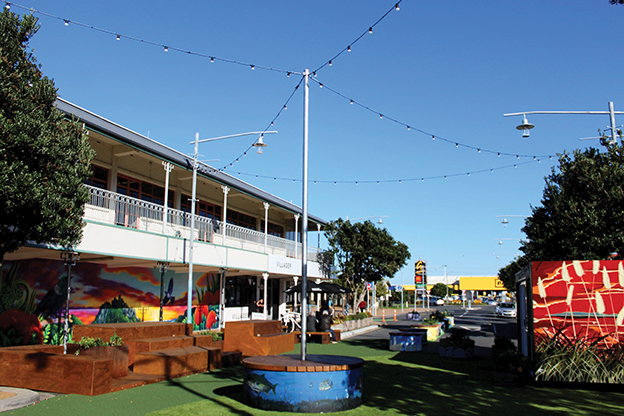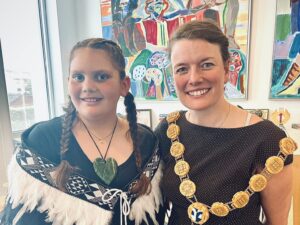Two workers whose cafe was nearest to Thames’ innovative and controversial ‘Create the Vibe’ want to dispel the rumour that homelessness has ceased since the public space was removed.
They also believe the reversion of Mary St back into a traffic thoroughfare was not “100 per cent good for business”.
Jason Liddiard, owner of The Villager along Mary St, addressed Thames Community Board members at a meeting on February 21.
He said he was often dubbed ‘Mayor of the Vibe’ while the space was still standing.
“One of the key factors when I bought the cafe was the fact there was a public space there. The [previous] owner reassured me the space was permanent, it was going to stay there, and that led me to thinking how I could offer my services outside of my cafe and into that space.”
Jason said every day he would “dress the Vibe” by putting the beanbags out and opening the shade umbrellas up. People “responded really well to that”, he said.
But the Vibe also attracted “a whole spectrum of people”, from “those that sleep rough to those who travel from Auckland to visit their bach in Pauanui”, he said.
“There were a number of undesirables who no one in town liked, and I took it under my wing to basically build a strong enough case to have them removed from [that place within] town. “Something I learned was that you’re going to get all members of the public engaging in the space, but it does need a champion.”
Jason was joined by cafe worker Kiri Ko, who said the idea that it would be “100 per cent good for business to remove a public space has been proven incorrect”.
“It really wasn’t good for [Jason’s] business or the amenity of businesses that are relying on a public space to get customers,” she said.
“The other rumour I’d like to dispel is that getting rid of the Vibe got rid of the homeless people. When I was working at the Villager after the Vibe was dismantled, I had several elderly people come up to me and say: ‘Aren’t you glad the homeless people are gone now?’ and actually, I had to point out to them that the homeless people were now there across the street, and at the civic centre… so removing the Vibe did not remove the homeless people, it just shifted them.”
Kiri said homelessness was a problem Thames was going to have to face any time a new public space was implemented.
“There will be all sorts of people using it, and because there are people with mental health issues that want to hang out in a public environment because they feel safe, is not a reason to can a public space.”
The Vibe was removed in August last year after being implemented for 28 months.
According to Thames-Coromandel District Council, the overall “adaptive urbanism” initiative cost $336,587 and was 90 per cent funded by Waka Kotahi New Zealand Transport Agency and 10 per cent by council.
It was touted as becoming “a shared civic hub space for people to gather on Mary St at the corner with Pollen St – right in the middle of things… and where a good town square should be”.
The pedestrian area was declared ‘Best Street’ at the Keep New Zealand Beautiful Awards on February 17, 2022. However, two petitions – one ‘for’ and one ‘against’ The Vibe were presented to elected members during its lifetime, while businesses along the main drag spoke of loss of income and of the space attracting anti-social behaviours and drug use.

The Create the Vibe pedestrian space in Mary St, Thames. File photo: KELLEY TANTAU
Vibe removal ‘not good for business’




